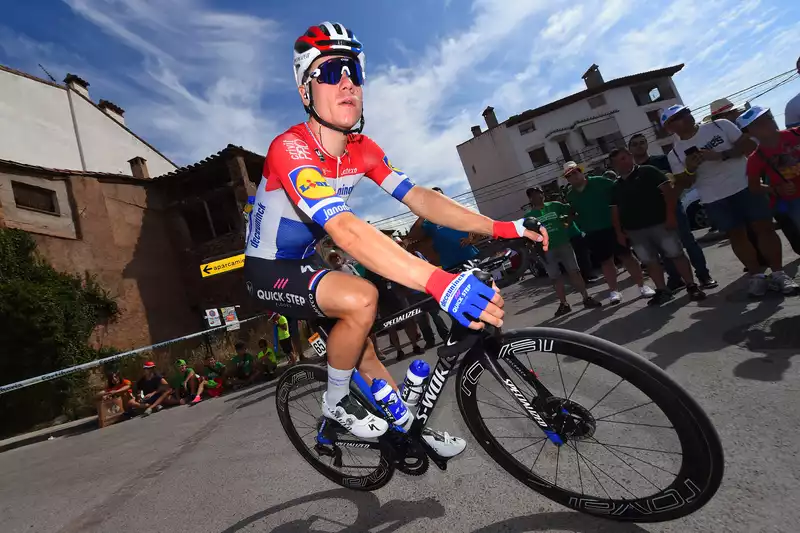Fabio Jacobsen (open in new tab) has been released from a hospital in Sosnowiec, Poland, and allowed to move to a hospital in his home country, one week after being seriously injured in a violent crash on the opening stage of the Tour de Pollogne (open in new tab).
Deceuninck-QuickStep (opens in new tab) issued the following statement on his condition: "Fabio Jacobsen is in good condition and will be transferred on Wednesday to a hospital in Leiden, the Netherlands (Leiden University Medical Center), where his injuries will be followed up
"Fabio Jacobsen is in good condition.
Jacobsen suffered multiple fractures to his palate and facial bones and damage to his trachea when he crashed through a barrier in the last few meters of the sprint finish. Doctors placed him in a medically induced coma and performed a five-hour reconstructive surgery last week.
Jacobsen has since awakened, confirmed that there are no serious injuries to his brain, spine, or vital organs, and is communicating via text message.
Jumbo-Visma's Dylan Groenewegen admitted responsibility for the crash and apologized after he deviated from the line to stop Jacobsen from passing along the barrier, causing the crash.
The UCI Disciplinary Committee will review the incident (open in new tab) to determine if Groenewegen should be punished in addition to disqualification and a CHF 500 fine.
The CPA, the athletes' association, has asked the UCI to investigate whether the race properly fixed the barriers.
Groenewegen also fell in the incident and suffered a broken collarbone. Marc Sarrault (Groupama-FDJ), Damien Touze (Cofidis), and Eduardo Prades (Movistar) were briefly hospitalized with injuries from the accident. Jasper Philipsen (UAE Team Emirates) and Nielson Powles (EF Pro Cycling) were injured but were able to continue racing.
CPA President Gianni Buño called on the UCI (open in new tab) to create a standard for "approved barriers" and to require the use of approved barriers at critical points in the race.
Retired sprinter Robbie McEwen said he raised similar issues in his career nearly a decade ago.
"I simultaneously proposed barrier designs to both the UCI and the ASO for exactly this situation. In some races it has improved, but a good barrier must be sturdy. The boards on the front of the barrier must also come down at an angle and touch the road. Everything has to deflect the rider to the road," McEwen told Cycling News (opens in new tab) last week.
"The Polish barriers were flying in all directions and looked like they were made of plastic. The Polish barrier flew in all directions and looked like it was made of plastic. There is a lot of work to be done regarding safety in the last few hundred meters."


Comments